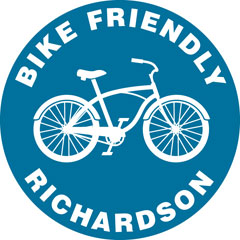Last Sunday, BikeDFW had a general meeting with special guest speaker Peter Lagerwey, Senior Transportation Planner for the Toole Design Group and former Bicycle Coordinator for Seattle, who discussed ways to provide effective input on regional bicycle and transportation planning.
Our friend, Sean Cortez-Mathis attended the meeting and shared some really great notes with the BFR Facebook Group:
BikeDFW is a bicycle advocacy and education group for the DFW area. The goal of the group, as I understand it, is to function as a clearinghouse for ideas and efforts as well as provide education for groups such as BFR.
Although I was interested in finding out about the group, I attended largely to hear Peter Lagerwey speak. The following are a few highlights from his presentation. His presentation consisted of four topics.
First he spoke of elements for successful outcomes. He noted consensus and community as two essential pieces. Along with this he stated that the advocate community needs to mirror the community for which it is advocating. Also that it is necessary to be ubiquitous and went on to describe ways in which to accomplish this.
He next spoke on “what should we be doing” and listed 7 items. Number one on the list was to get issues into all government plans. He noted that governments have multiple plans such as master plan, parks plan, transportation, etc. and that being part of each of these is critical. The next 6 items spoke to this first item. In each of the seven items he encourages you to look for items that value over and over again. Change that happens without your continued involvement.
The next topic was trends. Mr. Lagerwey presented the statistic that 60-80% of cycling is always on the road no matter what you build. He spoke about “Complete Streets”. This is the government’s needs to be inclusive of all users when designing projects. Two more items of note were safe routes to school initiative and transportation as a public health issue.
Lastly, he finished with some general thoughts. Advocacy groups need to toss out the “silly notion” of separating recreational and utilitarian cycling. This distinction is not made between auto trips and should be the same for bicycles. Lastly, speed and crash rates have direct correlation and gave examples of ways to reduce both while minimizing interruption to traffic flow.
It is my feeling that Mr. Lagerwey sets out goals and guideposts that would be of value to BFR. They are consistent with our goals. The implementation of these is made much easier as we are a newly formed group. I also feel that it is important that we maintain a connection with BikeDFW. Their mission and ours should work well together.
I’d like to thank Sean for taking the time to attend the BikeDFW meeting and sharing his notes with us.

